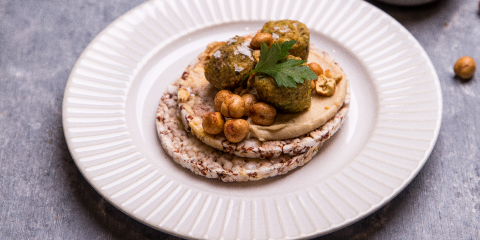A Mineral Which May Reduce Your Risk of Developing Kidney Stones

Kidney stones is something no one wants to experience. Good news is there are lifestyle habits which can decrease your risk of developing a kidney stone. One of these habits is your diet.
Kidney stones are a gathering of mineral and salt deposits which form in different sizes and shapes your kidneys. These are usually very painful to pass.
Two of the four types of kidney stones are linked to your diet. 80% of kidney stones are caused by calcium oxalate. Calcium oxalate is formed by a diet high in oxalate and not enough calcium or fluids. The uric acid stones are made when your urine is too acidic such as when your diet is too high in protein or due to dehydration.
If you have had a kidney stone, you are at greater risk of developing another kidney stone. The type of stone you have determines the type of diet you should follow.
A study hot off the press has found that those people who included more magnesium in their diet from food had a thirty percent lower chance of developing a kidney stone compared to those who had lower amounts of this mineral in their diet. It is important to note that this finding was found in food rather than from supplemental form of magnesium.
Magnesium is an essential major mineral your body needs to function. It is involved in over three hundred and twenty-five different body functions.
The researchers investigated the quantities of magnesium in the diet of the people in the study and those with the highest intake of magnesium which was three hundred and seventy-nine milligrams compared to those with the lowest intake of magnesium being less than two hundred and fifty milligrams, had a thirty percent lower change of developing a kidney stone. This finding was statistically significant with a p value of less than zero point zero two.
If you are not sure if you are getting enough magnesium in your diet, good sources include:
- Green leafy vegetables
- Wholegrains, or wholegrain containing foods such as wholegrain crackers/crispbreads or Corn Thins slices
- Beans and legumes
- Nuts such as almonds.
- Fortified cereals
- Seafood like anchovies and oysters have some of the highest amounts.
- Firm tofu
- Avocado
- Seeds such as pumpkin and sunflower seeds
Current daily intake recommendations for health and magnesium intake is men over the age of thirty one years need three hundred and fifty milligrams a day and women need two hundred and sixty five milligrams a day. So, the amount needed for health, especially for men, is not that far off the amount recorded in the highest amount of magnesium in the diet and consequently greater kidney stone protection.
Take home message: By getting your magnesium needs through foods you will also be providing your body with other healthful compounds which may decrease your risk of kidney stones. Foods provide a matrix of health benefits, and this study is a reminder that supplements are still not superior to whole foods.
References:
- Shhringi S et al. R I Med J (2013), 2023:106 (11): 20-25
- Magnesium. Nutrient Reference Values Australia and New Zealand. Eatforhealth.gov.au. https://www.eatforhealth.gov.au/nutrient-reference-va lues/nutrients/magnesium